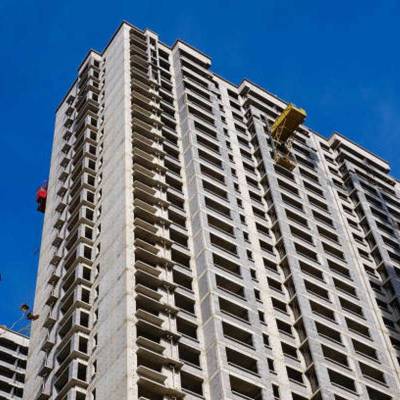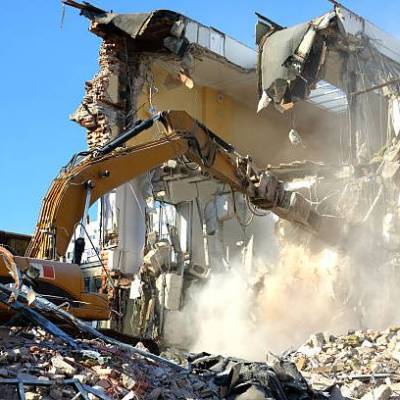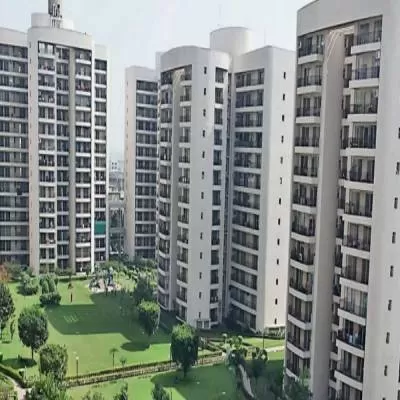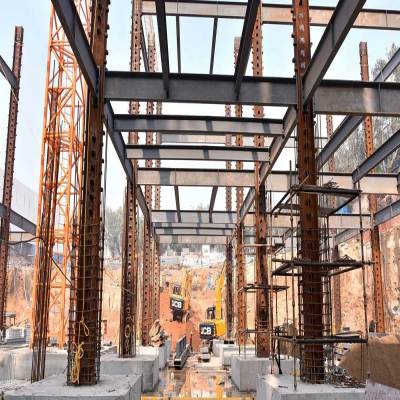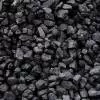- Home
- Real Estate
- Here’s why 70 per cent in a tall building is spent on high quality materials

Here’s why 70 per cent in a tall building is spent on high quality materials
With structural analysis, wind tunnel tests, formwork, precast technology, tower cranes, concrete pumps, elevators, glazing and facades, construction software, safety and security being essential to build tall, high quality materials in construction is most crucial. This is evident with “70 per cent of the project cost being spent on materials for the structure,” as Ani Ray, Managing Director, ACC (Arabian Construction Company), shares.
For building tall, concrete grade between M60 and M100 is used. “In Lodha World One in Mumbai, M95 grade has been used,” informs Ray. Also, for Raheja Revanta in Gurgaon, high-quality materials in cladding, external doors and windows and glass and steel in railings as well as in pipes and conduits have been used, says Nayan Raheja, Executive Director, Raheja Developers. And, speaking on Omkar 1973 in Mumbai, Raman Sapru, President-EPC, Omkar Realtors & Developers, adds, “We have imported special Mitsubishi-made aluminium composite panels (ACP) from Japan which are fire-retardant and have high durability, and hence longetivity. High-grade concrete for the building helped us reduce the size of the columns and build a leaner structure. And use of post-tensioning in slabs makes the building lighter.” Omkar has also used low-E coating for the glass, used epoxy-coated pipes and variable frequency drives for Motors to make building durable and efficient.
“Also, for smooth pumping of concrete, high grade admixtures and superplasticisers are needed,” shares Dr HM Raje, Director, Raje Structural Consultants. “And, for speed, high-tensile grade of steel, now available up to 550 D, is required. Corrosion inhibitors are also used in concrete to avoid corrosion thus increasing the life span of structure. Also, cathodic protection, done at the foundation level itself, eliminates corrosion activities thoroughly.” Today, capsules of inhibitors are available, that can be injected in RCC structure, which converts into vapours and this protects the steel from corrosion. “Further, lightweight materials such as dry walls and blocks with a density of about 700-800 kg per m are used to reduce weight,” Raje explains.
Indeed, high quality materials are the core and shell of tall structures.
While high-rise buildings are gaining prominence in India, challenges in execution remain, especially with breaking the old rules of construction and limitations in introducing the latest technologies. For this, adopting the right materials in high-rise construction is of utmost importance With structural analysis, wind tunnel tests, formwork, precast technology, tower cranes, concrete pumps, elevators, glazing and facades, construction software, safety and security being essential to build tall, high quality materials in construction is most crucial. This is evident with “70 per cent of the project cost being spent on materials for the structure,” as Ani Ray, Managing Director, ACC (Arabian Construction Company), shares. For building tall, concrete grade between M60 and M100 is used. “In Lodha World One in Mumbai, M95 grade has been used,” informs Ray. Also, for Raheja Revanta in Gurgaon, high-quality materials in cladding, external doors and windows and glass and steel in railings as well as in pipes and conduits have been used, says Nayan Raheja, Executive Director, Raheja Developers. And, speaking on Omkar 1973 in Mumbai, Raman Sapru, President-EPC, Omkar Realtors & Developers, adds, “We have imported special Mitsubishi-made aluminium composite panels (ACP) from Japan which are fire-retardant and have high durability, and hence longetivity. High-grade concrete for the building helped us reduce the size of the columns and build a leaner structure. And use of post-tensioning in slabs makes the building lighter.” Omkar has also used low-E coating for the glass, used epoxy-coated pipes and variable frequency drives for Motors to make building durable and efficient. “Also, for smooth pumping of concrete, high grade admixtures and superplasticisers are needed,” shares Dr HM Raje, Director, Raje Structural Consultants. “And, for speed, high-tensile grade of steel, now available up to 550 D, is required. Corrosion inhibitors are also used in concrete to avoid corrosion thus increasing the life span of structure. Also, cathodic protection, done at the foundation level itself, eliminates corrosion activities thoroughly.” Today, capsules of inhibitors are available, that can be injected in RCC structure, which converts into vapours and this protects the steel from corrosion. “Further, lightweight materials such as dry walls and blocks with a density of about 700-800 kg per m are used to reduce weight,” Raje explains. Indeed, high quality materials are the core and shell of tall structures.


